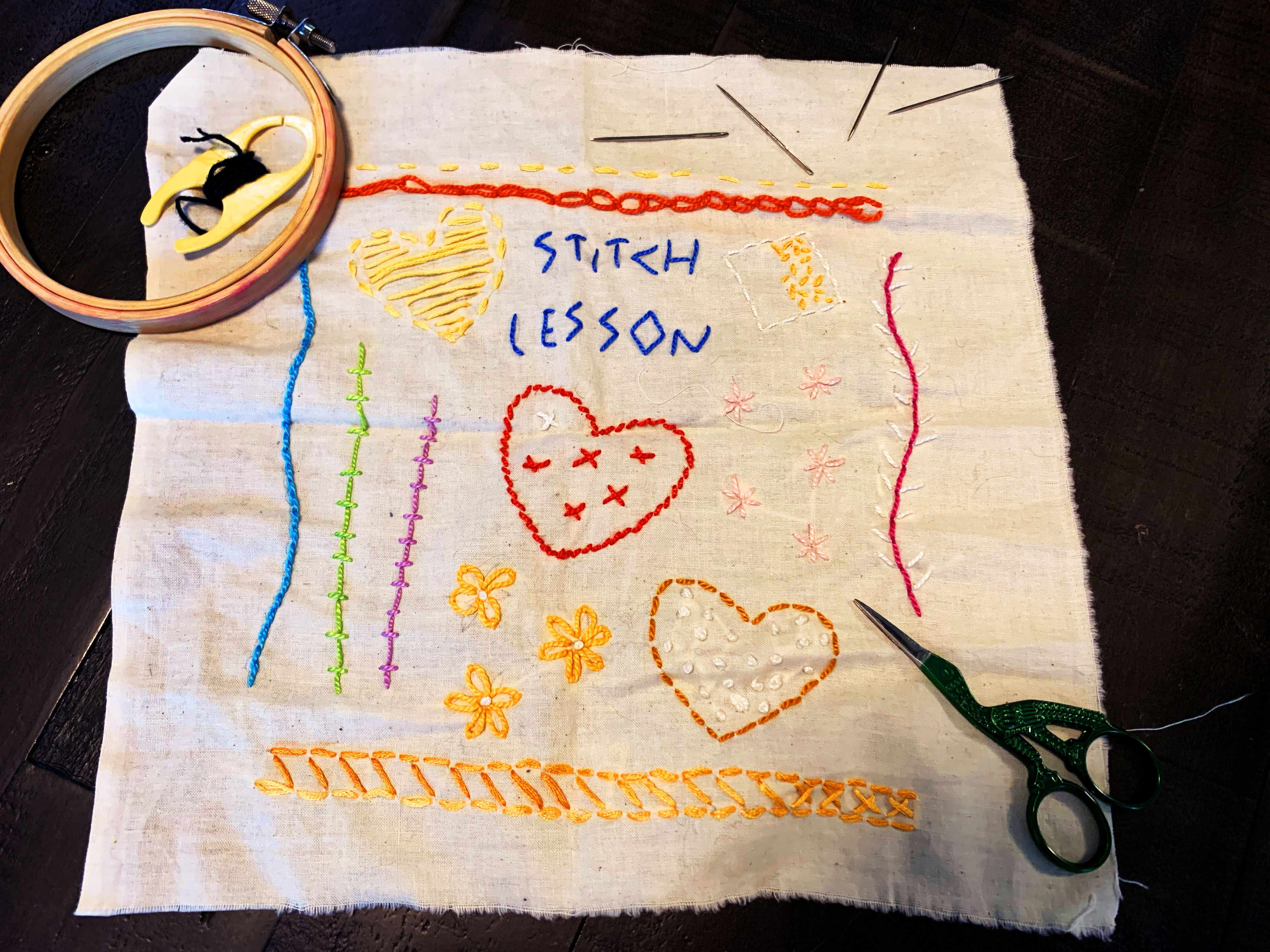Embroidery is the latest activity to try from home
Natalie Dean | Entertainment Editor
Through the last year, people have had to get creative with their activities and pastimes. The world went through a collective bread baking phase and making the TikTok famous whipped Dalgona coffee, but there’s one activity that’s been overlooked. Embroidery has long been used throughout history to adorn and craft clothing items or to make elaborate art pieces. It continues to be a popular and eclectic activity, with a variety of ways to mix materials and try new designs.
The starting materials don’t have to cost the artist a lot of money, and many smaller items can be found around the house or at an art store. It’s a hands on project that requires practice and patience, but it pays off to see the finished product. Here are some insider knowledge, tips and tricks that can make it easier to enjoy:

Starter supplies:
- Key items for any beginner embroiderer would be a wooden or plastic embroidery hoop or frame, a set of needles, thread of the artist’s choosing, fabric and sharp scissors.
- I find it useful to have a small pouch or container to keep supplies in, and it helps keep some of the smaller items organized.
- Hoops, frames, fabrics and embroidery patterns can be found in thrift stores at low price points and often be bought in bulk.
Optional supplies:
- There are specialty embroidery scissors that one can use, which tend to be smaller and sharper than traditional scissors — they are also often decorated or embossed.
- A thimble is small but mighty, and it can protect sensitive fingertips from the threading and sewing process.
- Using a very small amount of thread conditioner or beeswax can prevent tangling and knotting. If using a conditioner kit, lightly take the thread that is being used and run it along with the conditioning agent, while pressing against the thread with a finger. Then, pull the thread between two fingers to remove any static.
Learn the stitches:
- Knowing the difference between a French Knot, a Running Stitch, Chain Stitch, Stem or Split Stitch, Long and Short Stitches, Woven Wheels and Lazy Daisy Loops will help narrow down which ones should be used for the desired effect.
- Take it slow at first; consider watching YouTube videos and practicing on cheaper fabric to get the hang of it.
- Watch out for pulling stitches too tight, which can distort the fabric and overall design.
- Overlapping stitches can provide a lush look for flowers or nature scenes.
- Stitches that involve knots can be perfect for finer details or building texture.

Contact the author at ndean17@wou.edu

